TikTok’s self-described ‘fashion girlies’ are obsessed with real fur. Is the stigma over?
It has been shunned for years, but suddenly fur is back on the catwalk and loved by the coolest kids in town. Kaleigh Werner speaks with experts, influencers, and activists to find out if the stigma of wearing real fur is truly gone

En route to the airport at 8 o’clock on a weekday morning, a young woman made a surprising pit stop: Madison Avenue Furs, where she declared: “I’m leaving here with a fur.”
This store, on a nondescript street in midtown Manhattan, is apparently TikTok’s latest viral discovery. Ever since a string of 20-something influencers shopped there and posted about it, there has been a steady stream (and occasional swarm) of Gen Z shoppers, according to owner Larry Cowitt.
“ I've never in 42 years seen so many young women coming in and wanting to have something, anything, in fur,” Cowitt tells me as I sit across from him in his office, a few feet away from the early morning customer. He adds: “They’re from all over the world, too. I got 20-year-olds coming in from Columbia (University), New York University, and out of the country.”
For decades, real fur has been taboo to the point of being banned across much of the fashion industry. Anti-fur groups coordinated international campaigns featuring graphic imagery, protesters hurled red paint at wearers and stormed catwalks, PETA ran a decades-long celebrity-backed movement in the 1990s and 2000s featuring nude models and actresses photographed under the slogan ‘I’d rather go naked than wear fur,’ and luxury fashion houses such as Gucci, Prada, Versace and Marc Jacobs outlawed it.
But now, the culture seems to be shifting. Influencers are posting photos and videos of themselves in real fur, and younger consumers are being, well, influenced – and they’re dropping hundreds of dollars on vintage “upcycled” furs.
So, is the stigma of real fur over?
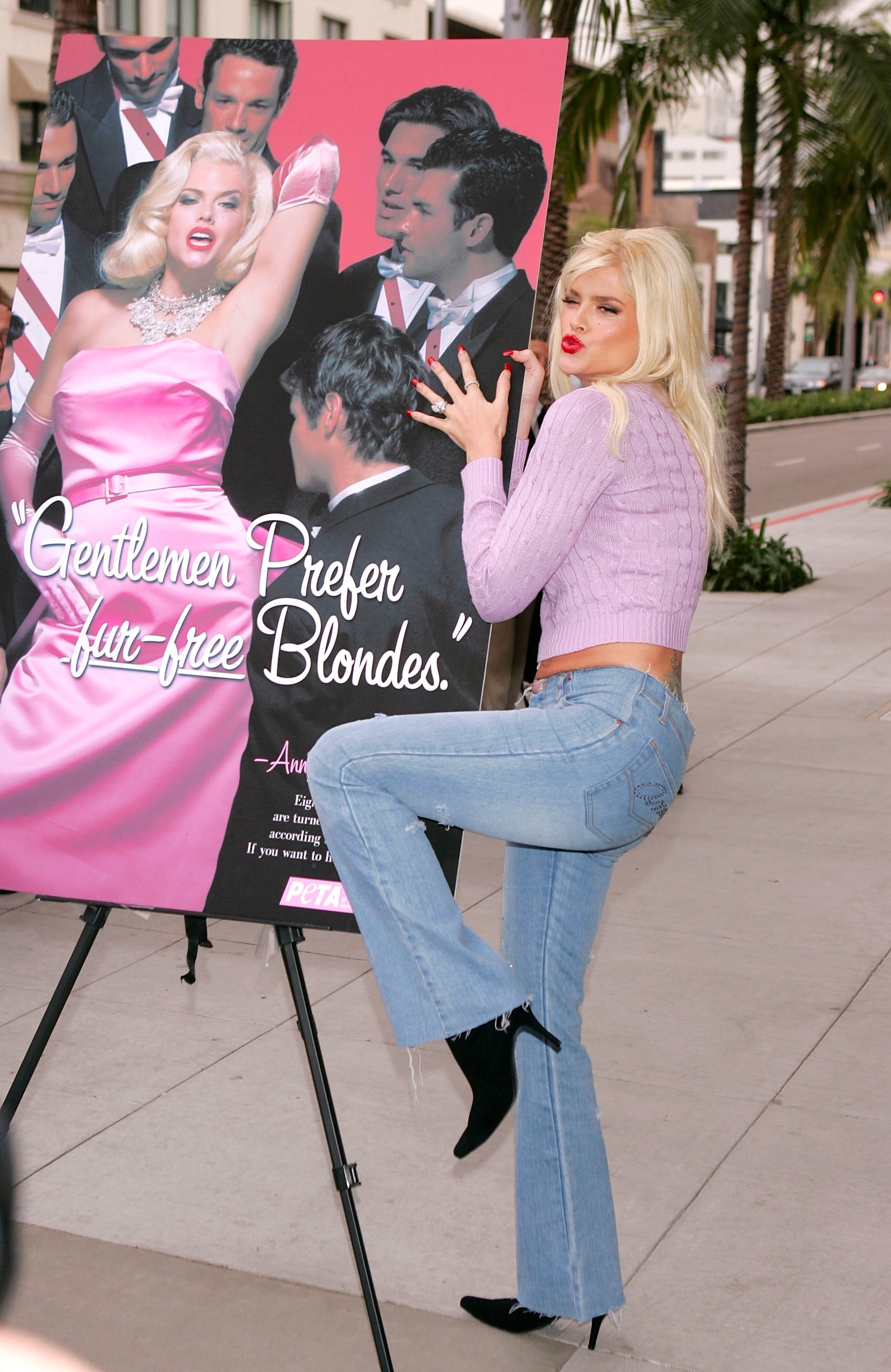
Gen Z’s craving for vintage fur – and the viral ‘mob wife’ aesthetic
Gen Z is on the hunt for real, vintage fur. They’re digging through their grandmothers’ closets, lining up around the block for cut-price sales and trawling resale sites like eBay and The Real Real. But why?
Neri Sillaman, an NYU adjunct professor and fashion historian, says fur became a marker of wealth in the 1950s when it “became a status symbol.”
Several “old money” TikTok trends have recently emerged with anti-progressive undertones and conservative views of femininity — like MAGA makeup and the trad wife influencers.
The Mob Wife craze — a satirical style model for the fictional, self-assured partners of tough men (think Carmela Soprano) in stilettos and mammoth fur coats — has been one key in the resurgence of animal hide garments.
In the Oscar-nominated 2024 film Anora, actor Mikey Madison plays a 23-year-old Brooklyn stripper who marries the 21-year-old son of a Russian oligarch. The first thing she demands with her new money (after her 5-carat diamond ring) is a black Russian sable fur coat.
Eloise Dufka, a beauty and style influencer with more than 612,000 followers, cited the ‘mob wife’ trend as part of her style inspiration. She bought a $1,600 full-length vintage coyote coat and posted a video on January 23 that added to Madison Avenue Furs’ popularity.
Eloise, 25, told The Independent: “I remember the Mob Wife. T here was just this level of confidence and appeal that came with owning a fur. Now, stepping into being more confident, independent, I was like, this really just fits with the energy that I want to portray and also feel inside.”
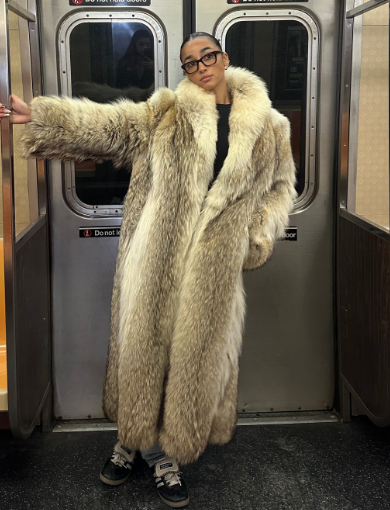

I spoke with 22-year-old Sophia Rofe, who went shopping at Madison Avenue Furs on her lunch break. Her visit was inspired by the luxury style influencer Audrey Peters, who has more than a million social media followers.
After Peters (whose word on style, Sophia says, “is Bible”) posted about the store on her Instagram story, Sophia and her two friends made the pilgrimage to midtown Manhattan. Within an hour, they had each bought a coat. Sophia bought a $980 marble mink – and posted about it on TikTok – while her friends spent between $600 and $700 on theirs. Sophia has since been back and spent $850 on another mink coat and a rabbit fur coat.
“ One of my best friends is getting married soon, and I was like, ‘You need a fur’,” Sophia told me. “ When I got there, it was game over for me.
“I feel like fur adds that air of wanting to look expensive. Mob definitely brought this all back, but I think it took a second for it to translate into (fur) coats for people. At first, it was makeup.”
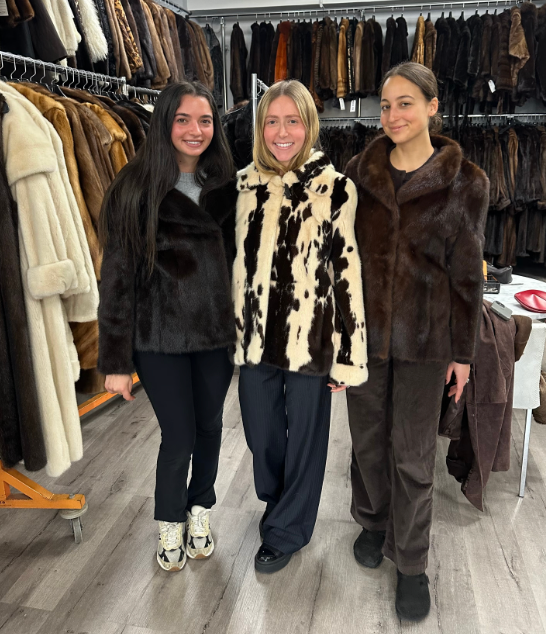
Madison Avenue Furs’s owners, brothers Steve and Larry Cowitt, have adjusted their stock to accommodate Gen Z’s demand for pre-owned and vintage items.
Larry said: “ They're coming in for oversized, long hair, usually mink. They're buying foxes, they're buying raccoons, they're buying anything that's in-your-face or out there.”
“They’re not caring as long as it is upcycled,” he continues, referring to used garments that’ve been repurposed and updated. “We do sell new furs, but I feel that the younger people coming in are looking for more upcycled and more pre-owned.”
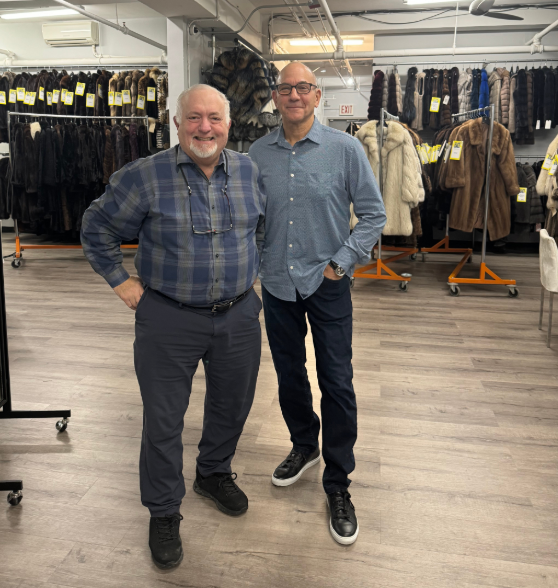
Celebrity influencers and Instagram dressing
Instagram this winter has been a catalogue for fur. Picture influencers in Aspen gliding through the snow in heels and an enormous fur coat. Kendall Jenner has become the poster girl for this opulent, cold-weather style aesthetic after she was recently seen strolling through the ski town in a 2011 Balenciaga fox fur coat.
Many young girls, with a penchant for instantaneous purchasing, are following their algorithm like it’s a winter wardrobe builder that shows they’re in the know (cue the “fashion girlies will understand” captions).
Professor Sillaman explained that fur is still viewed as a marker of social standing. She said: “It (fur) represents you as cool and as trendy now, as fashionable as the influencers.
“It's quite ironic, though, because fashion is about being individual and having your own voice and your own individuality expressed. But almost everyone looks the same because social media tells you if you wear this coat, you will look cool.”
Walking through downtown Manhattan, you can see the “Instagram dressing” in action, with Gen Z women pairing their furs with Adidas Samba sneakers and balaclavas to make it more streetwear.
“ A fur is just so nice,” Sophia said. “You could just cover up everything you're wearing, and you could be in sweatpants and still look so chic. I wear mine everywhere. I wear mine to the gym.
“ I have one that I wear specifically to Barry's Bootcamp because if I'm a little sweaty, then I don't want to wear the more expensive ones.”
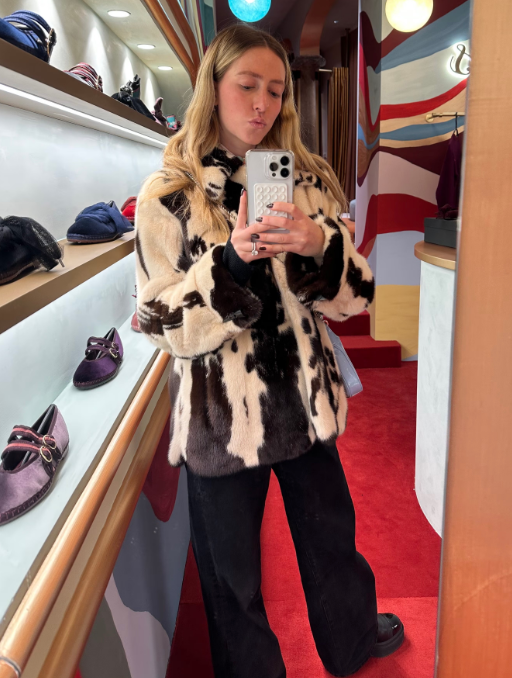
Ashley Byrne from PETA thinks Gen Z’s habit of replicating styles they see online is why it seems like there’s more of a fur resurgence than there actually is — that and the fact that the fur industry has been pushing this narrative, too.
“I think the amount is exaggerated,” Byrne said. “The fur industry is kind of always trotting out the same tired PR saying that fur is back and sending out press releases, saying that it's back. It's a little more visible right now because of TikTok, because of social media, but it's not more prevalent.”
Byrne said the fur industry has been “plummeting through the floor.”
“If you look at the numbers, production dropped by 60 percent from 2022 to 2023, according to recent reports. Even in China, which really is probably the biggest for a producer, the decline has been extreme,” she said.
According to Statista, global fur production sank to 15 million in 2023, down from 81 million in 2012.
While Byrne admitted she wasn’t too concerned about the future implications of Gen Z’s taking to real vintage fur, Mark Glover, the director of Respect for Animals, believes it’s bothersome considering the garments are still animal hides.
“Even if it is so-called 'vintage' fur, it is still skin that was once a part of the body of a living animal and perpetuates the idea that real fur is acceptable in fashion. Vintage fur is bad news for animals: the cruelty and suffering doesn't diminish with time,” he said.
The origins of fur
Fur coats and wraps were a necessity before they became the pageantry garments of today. Humans started wearing animal hides to keep warm when they began migrating out of Africa over 180,000 years ago.
By 1327, King Edward III had declared fur the fashion of royalty. Anyone who was not a diplomat, head of state, or blood relative, was prohibited from wearing stoat skin specifically.
Fast forward to the Golden Age of Hollywood (the 1920s to the 1950s), consumers continued to view fur as a token of prosperity, worn by icons Greta Garbo, Marilyn Monroe, and Audrey Hepburn.
After World War II ended, luxury fashion maisons Christian Dior and Givenchy amped up the use of fur in their haute couture collections, further extolling it as a marker of wealth.
Things changed during the 1980s. PETA worked in tandem with other animal activist groups to question the ethics of fur manufacturing. Sillaman described this period to The Independent: “We see fur being made a little bit more controversial here. People weren’t aware of the amount of animals being harmed and killed.”
The start of the 21st century was a wake-up call for many in the industry. Vogue published countless stories on the social concerns behind the material, and Kering, the parent company to Gucci, Bottega Veneta, and Yves Saint Laurent, banned all its brands from producing fur in 2022.
But the inevitable pendulum swing has gone the other way, with a radical shift around morals and individualism in fashion that seems to align with wider politics. In the “Cruel Kids Table,” New York Magazine’s cover story about the rise of a young MAGA elite the week of the inauguration, real fur appears throughout.
Earlier this month, Tim Calkins, a clinical professor of marketing at Northwestern, spoke to The Wall Street Journal about the return of bikini models to Carl’s Jr ads: “Clearly with the new administration… what is acceptable conduct is changing.”
The same could be said about fur.
However, there are some Gen Z-ers who never saw an issue with wearing fur.
“I feel like my perception of wearing fur hasn't changed because it wasn't a big deal to me,” Eloise said. “Now when I see people with fur, I love it. I'm like, this is so cool. I think it's also so fun that every piece is so unique. It's like a snowflake.”
The politics of fur also extends to climate change. Gen Z’s interest in vintage isn’t much of a surprise considering they are a generation seeing the real-time impact of climate change on their daily lives. Because of this, we’re seeing an overall rise in sustainable second-hand shopping.
A 2021 survey of 2,000 Gen Z Depop users, a second-hand clothing resell website, found 70 percent of respondents said they buy second-hand to reduce consumption and help the planet.
“ I think that people are finally realizing that having Shein, Zara, and Mango making things for them is worse for the planet than just repurposing things that are already on the planet,” Sophia said.
In reality, faux alternatives are being purchased, with people grabbing cheaper alternatives from the likes of Zara, H&M, and Shein, and higher-end options from luxury brands like Burberry. This fashion season alone saw many designers such as Gucci, Prada, and Simone Rocha ushering in more faux fur in the form of trench coats and jacket collars, noticing a rising demand in the industry.
“Faux fur keeps getting better,” Byrne noted. “Not just more luxurious and indistinguishable visually from the real thing, but it also keeps getting more eco-friendly.”
But many Gen Z women do want the real stuff — particularly if it’s vintage, meaning 30 years or older.
Eloise decided to invest in her vintage $1,600 coyote coat from Madison Avenue Furs because it was unlike anything else she had.
“I don't have a coat like this,” she explained. “It's a statement piece, it's not like I'm going to be wearing it every day.
“Certain things in my mind, I reserve solely for buying secondhand,” she continued. “I also love the idea of it being an heirloom of sorts. I like that they've been worn in and they come from someone.”
Back at the store, next to a $1,295 white fox fur long collar coat, I hear Larry ask what the woman from earlier ended up buying. “A blue fox,” his associate says. “For how much?” Larry questions. “$975, and she wore it on her way out.”
Join our commenting forum
Join thought-provoking conversations, follow other Independent readers and see their replies
Comments